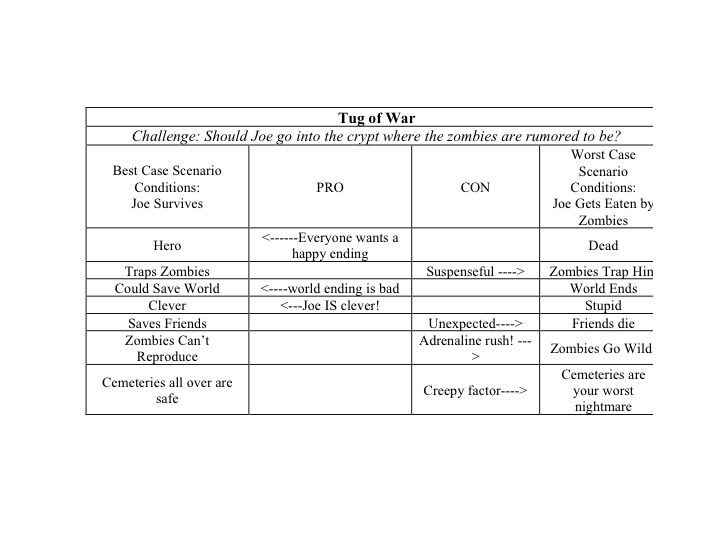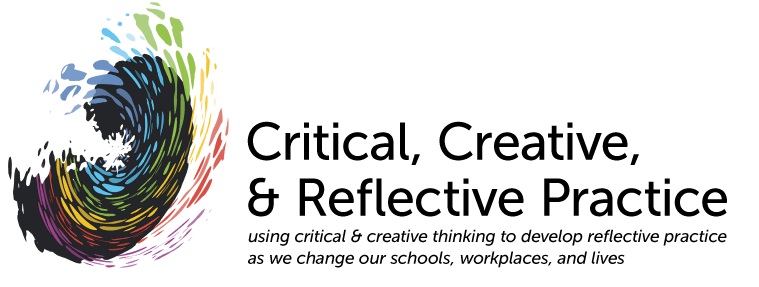Writers quickly discover that one of the keys to developing great plots is that the characters have to make interesting decisions…what the characters choose to do drive the plot, for better or for worse. How can a writer know what the consequences of some of the decisions might be before they happen? One way is with a tool originally created by social psychologist Kurt Lewin, called “force field analysis”, which was expanded upon by Michael Michalko in his book, Thinkertoys, and called Tug of War.
The idea of this tool is to help the writer determine not only pros and cons, causes and effects, but to understand the positive and negative forces at work.
- Using this tool will help writers to:
- Better define plots in general
- Identify character strengths and weaknesses
- Identify strong plotlines vs. weaker plots
- Make stronger decisions about plot direction, character choices, etc.
To use the tug-of-war diagram, the steps are as follows:
- Write the challenge you are examining, whether it is a decision your characters need to make or a choice about plot over which you are debating.
- Describe the best-case scenario and the worst-case scenario.
- List the conditions of the situation. According to Michalko, “conditions are anything that modifies or restricts the nature or existence of your subject. They are whatever requirements you perceive to be essential to solving a particular challenge .”
- Now you can take particular notice of the “tug-of-war” resulting from the forces that push you toward the best scenario and which lean toward the worst.
For example:

Looking at this, it seems like the negative forces are drawing the author more toward the worst-case scenario, which may prove to be more ideal for story purposes; but in the real world, would be devastating. For writers, merely looking at the various pros and cons can provide amazing insight for story direction and character development.
However, if this were a reality-based problem, the next step would be to figure out a way to move the condition toward the best-case scenario, which we could do by looking at ways to maximize strengths, minimize weaknesses and to add even more positive forces into the mix.
The trick here is to examine your conditions in order to give insight into how to fix the problem. How can you change or add conditions to solve your problem? Could you reframe your negative conditions as challenges that you can then solve?
For example, “In what innovative ways can Joe prevent his friends from dying?”
This is an excellent tool for writers to see how their choices can create a myriad of different causes and effects on the outcome of their stories.
(Original page by Mary Frangie)
